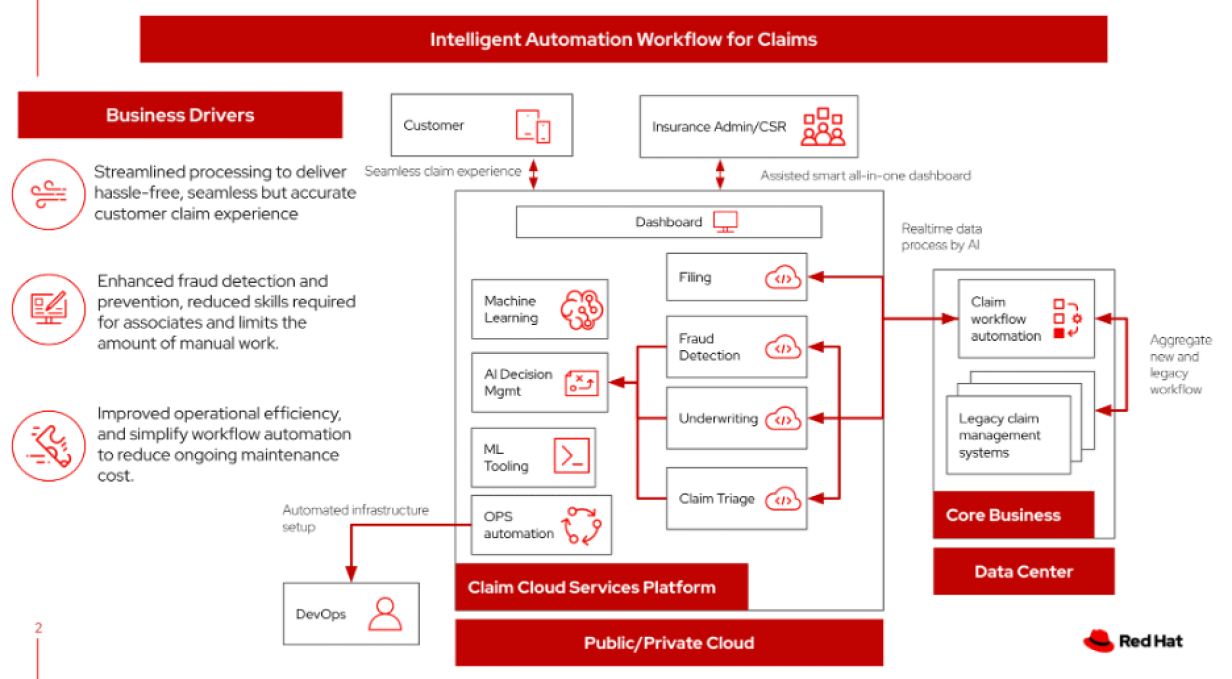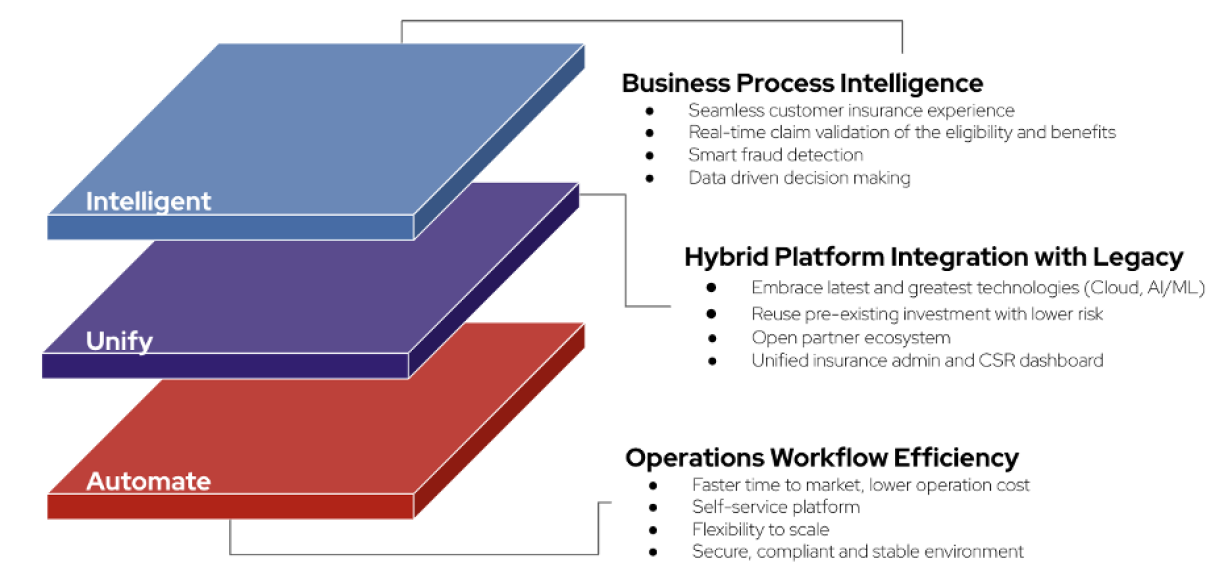How to architect intelligent workflow automation for insurance companies

Photo by Jonathan Petersson from Pexels
Insurance companies increasingly depend on digital technology to provide customers with a satisfying and prompt insurance experience. They are looking for ways to provide a seamless, streamlined, and cohesive experience to their customers.
[ Download the automation architect's handbook. ]
Architecture at a glance
This architecture, based on a study of claims systems in insurance companies, is designed to automate existing manual processes, tasks, and workflows. It also assists backend support with data-driven artificial intelligence (AI), shortening the requirements for training and onboarding employees and helping staff members avoid tedious, low-value, repetitive tasks. Being cloud-native, it also offers a flexible and scalable platform that can be hosted anywhere.
IT workflows
For insurance companies, intelligent workflow automation enables efficiency, accuracy, and security across operations. A typical insurance company's IT system can be broken down into two types of workflows:
- Business process: A collection of business tasks and activities that deliver a service to customers or accomplish business objectives.
- Infrastructure service: A collection of IT tasks, changes, and updates managed across systems, clouds, and datacenters.
Although these two workflows handle completely different areas, their goals are the same: Reduce manual labor, reduce response time, and increase volume.
Another goal when introducing new intelligent automation is to lower risk, reduce chaos, and reuse existing assets (hosting, system, software) as much as possible. To do that, organizations must be able to support hybrid platforms and legacy systems.
3 keys to successful transformation
The keys to successful transformation are: intelligent, unify, and automate.
- Intelligent: Introducing machine learning (ML) using artificial intelligence (AI) and robotic process automation (RPA) can assist business processes, new business, underwriting, and claims systems. These technologies can automate decision-making tasks based on predetermined data models.
- Unify: Choosing flexible hosting on hybrid platforms and reusing legacy systems ensures that change has a low impact on employees. Companies can support legacy systems while gradually adopting new technologies, and they can give business users a consolidated view of the information system.
- Automate: IT service management (ITSM) standardizes the management and monitoring of IT resources and services with infrastructure service workflows. You can enable self-service by automating setup, deployment, IT infrastructure updates, policy enforcement, and configuration changes. The benefit is an agile, scalable, and flexible environment.
Technological synergy
Perhaps one of the most important aspects of this architecture is integration and technological synergy. Far from disparate software strung together into ill-fitting pipelines, this reliable architecture uses modular applications working together seamlessly to take full advantage of modern systems, such as those running on open container platforms like Red Hat OpenShift.
[ Learn the top considerations for building a production-ready AI/ML environment in this free eBook. ]
More to come
In my follow-up articles, I'll share implementation details about moving from manual to intelligent automation and automating insurance systems with ITSM.




Christina Lin
Christina Lin is a Red Hat Portfolio Architect. She is an advocate for making innovative solutions down to earth and making them easily accessible for everyone. She is a speaker at many technology conferences around the globe. More about me

Denzil Menezes
Denzil is a principal architect and insurance lead at IBM's Industry Engineering Lab, creating solutions that align with industry imperatives and utilize the latest strategic technology offerings. More about me
Navigate the shifting technology landscape. Read An architect's guide to multicloud infrastructure.
OUR BEST CONTENT, DELIVERED TO YOUR INBOX





